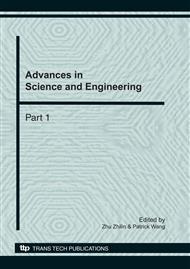[1]
IEEE Visualization Contest. 2004; Available from: http: /vis. computer. org/vis2004contest.
Google Scholar
[2]
Sanyal, J., et al. User Experience of Hurricane Visualization in an Immersive 3D Environment. in 4 International Symposium on Visual Computing, ISVC 2008. 2008: Springer.
DOI: 10.1007/978-3-540-89639-5_83
Google Scholar
[3]
Joshi, A., et al., Case Study on Visualizing Hurricanes Using Illustration-Inspired Techniques. IEEE Transactions on Visualization and Computer Graphics, 2009. 15(5): pp.709-718.
DOI: 10.1109/tvcg.2008.105
Google Scholar
[4]
Jiang, M., et al. Visualization Fusion: Hurricane Isabel Dataset. in IEEE Visualization 2004 Contest. (2004).
Google Scholar
[5]
Gruchalla, K. and J. Marbach. Immersive Visualization of the Hurricane Isabel Dataset. in IEEE Visualization 2004 Contest. (2004).
Google Scholar
[6]
Johnson, G.P. and C. Burns. OpenGL Visualization of Hurricane Isabel. in IEEE Visualization 2004 Contes. (2004).
Google Scholar
[7]
Doleisch, H., P. Muigg, and H. Hauser. Interactive Visual Analysis of Hurricane Isabel with Simvis. in IEEE Visualization 2004 Contest. (2004).
Google Scholar
[8]
Elboth, T. and A. Helgeland, Hurricane Visualization Using Anisotropic Diffusion and Volume Rendering. 5 th Annual Gathering on High Performance Computing in Norway, (2005).
Google Scholar
[9]
Schafhitzel, T., D. Weiskopf, and T. Ertl. Investigating Hurricane Isabel Using Texture Advection. in IEEE Visualization 2004 Contest. (2004).
Google Scholar
[10]
Schulze, J.P. and A.S. Forsberg. User Friendly Volume Data Set Exploration in the Cave. in IEEE Visualization 2004 Contes. (2004).
Google Scholar
[11]
Grads, C., http: /www. iges. org/grads/grads. html. (2008).
Google Scholar
[12]
Dovey, D. Vector plots for irregular grids. in IEEE Visualization '95 (1995).
DOI: 10.1109/visual.1995.480819
Google Scholar
[13]
Zockler, M., D. Stalling, and H. -C. Hege. Interactive visualization of 3D-vector fields using illuminated streamlines. in IEEE Visualization 1996. (1996).
DOI: 10.1109/visual.1996.567777
Google Scholar
[14]
Sanna, A., B. Montrucchio, and P. Montuschi, A survey on visualization of vector elds by texture-based methods.
Google Scholar
[15]
Van Wijk, J., Spot noise texture synthesis for data visualization. ACM SIGGRAPH Computer Graphics, 1991. 25(4): pp.309-318.
DOI: 10.1145/127719.122751
Google Scholar
[16]
Cabral, B. and L. Leedom. Imaging vector fields using line integral convolution. 1993: ACM New York, NY, USA.
Google Scholar
[17]
Van Wijk, J.J. Image based flow visualization. in SIGGRAPH'02. 2002: ACM New York, NY, USA.
Google Scholar
[18]
Jobard, B., G. Erlebacher, and M. Hussaini, Lagrangian-Eulerian advection of noise and dye textures for unsteady flow visualization. IEEE Transactions on Visualization and Computer Graphics, 2002: pp.211-222.
DOI: 10.1109/tvcg.2002.1021575
Google Scholar


